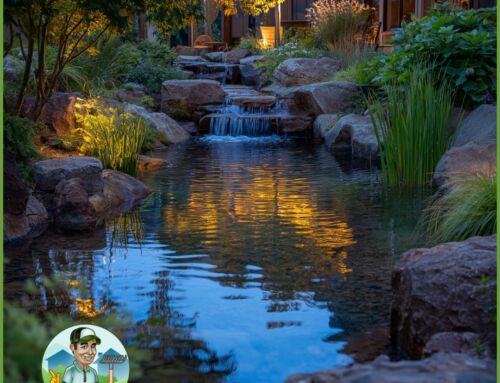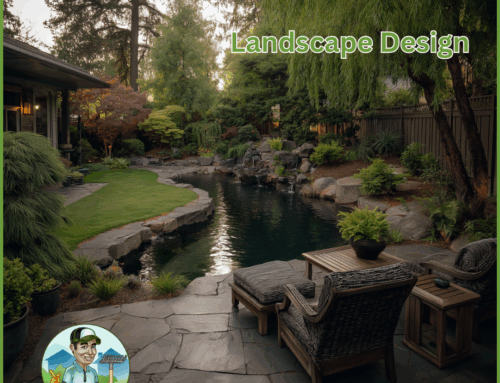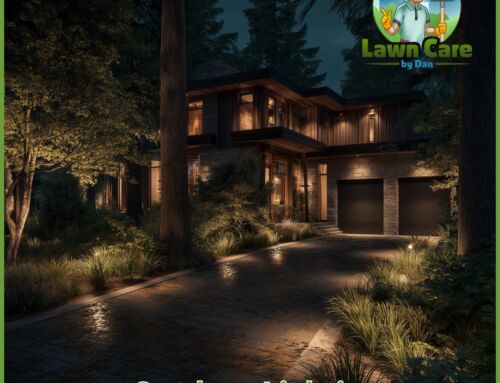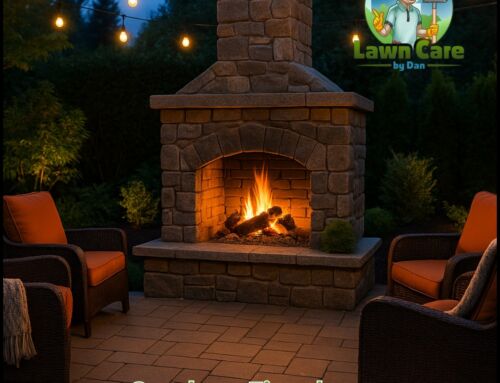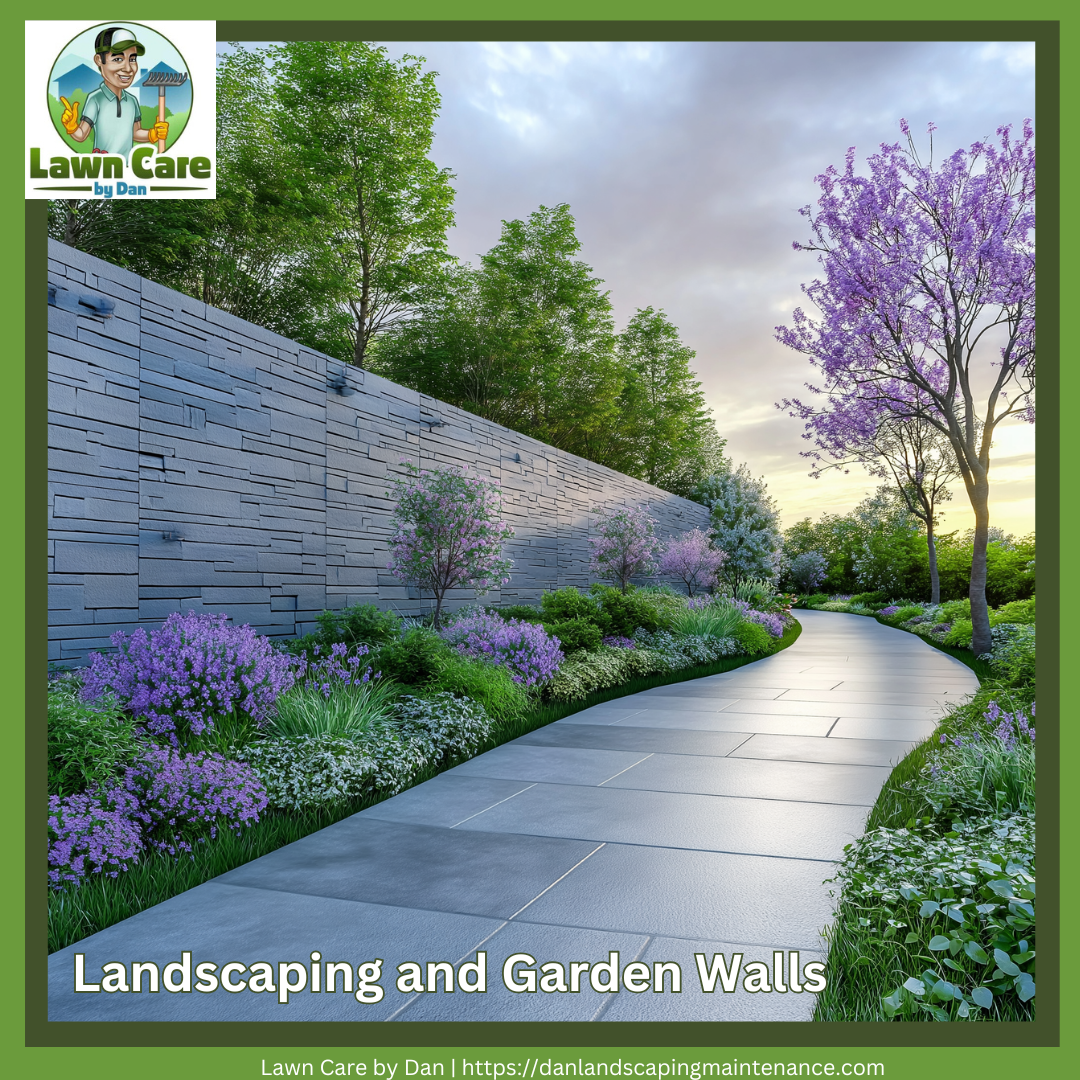
Introduction: The Magic of Landscaping and Garden Walls
Have you ever stepped into a garden and felt like you’d entered another world? The secret often lies in the details—especially the walls. Landscaping isn’t just about plants and flowers. Garden walls can elevate your outdoor space from ordinary to extraordinary.
This article will explore how Lawn Care by Dan can transform your yard with innovative garden wall ideas. From retaining walls to living green installations, the possibilities are endless!
Why Garden Walls Are the Unsung Heroes of Landscaping
Garden walls do more than hold soil in place. They create depth, define spaces, and add architectural beauty. They can double as seating areas, privacy screens, or even mini gardens.
Did you know that ancient garden walls, like those in Babylon, were adorned with cascading plants, inspiring today’s vertical gardens?
7 Stunning Garden Wall Landscaping Ideas
Garden walls are versatile and can be tailored to fit nearly any landscaping style. They add structure, functionality, and aesthetic appeal to outdoor spaces. Below, we’ll explore seven ideas for creating a backyard that’s both practical and visually stunning.
1. Retaining Walls with a Twist
Retaining walls aren’t just for preventing erosion—they’re a chance to add personality to your yard. Elevate their look with creative designs.
- Built-In Seating: Incorporate a bench along the wall for a cozy, relaxing spot.
- Colorful Tiles: Use hand-painted tiles or mosaics to turn your retaining wall into a piece of art.
- Integrated Planters: Add recesses or ledges to hold vibrant flowers or lush greenery.
For instance, a tiered retaining wall with lavender, boxwood, and creeping thyme can create a picturesque, fragrant border for your patio.
2. Vertical Gardens for Small Spaces
Vertical gardens are ideal for urban backyards or compact outdoor areas. They maximize space while adding lush greenery.
- Herb Walls: Grow herbs like basil, rosemary, and mint for a functional and aromatic feature.
- Succulent Frames: Create geometric patterns with succulents for a contemporary look.
- Climbing Vines: Use trellises or wire grids to train flowering vines like jasmine or bougainvillea.
Vertical gardens also improve air quality, making them a perfect blend of beauty and practicality for tight spaces.
3. Rustic Stone Walls for a Timeless Look
Rustic stone walls evoke a sense of permanence and history. They seamlessly blend into natural landscapes, making them perfect for cottage-style gardens.
- Dry-Stack Stone Walls: These require no mortar and have a charming, natural appearance.
- Mixed Materials: Combine large, irregular stones with smaller pebbles for added texture.
- Accent Features: Include built-in niches to showcase statues, lanterns, or small plants.
Picture a rustic wall adorned with creeping ivy, surrounded by daisies and poppies—it’s a scene straight out of a storybook.
4. Living Walls that Breathe Life
Living walls, also known as green walls, are vertical structures covered with plants. They’re a fantastic way to infuse life into your outdoor design.
- Modular Panels: These systems make it easy to plant and maintain greenery.
- Native Plants: Use local flora to reduce maintenance and attract pollinators.
- Seasonal Swaps: Change out plants to keep your wall vibrant year-round.
A well-designed living wall can also reduce noise pollution and insulate your outdoor space, making it both beautiful and functional.
5. Decorative Screens for Privacy and Style
Privacy doesn’t have to mean dull fences. Decorative screens bring artistry to your garden while creating secluded spaces.
- Laser-Cut Metal: Opt for intricate patterns that cast dynamic shadows throughout the day.
- Wooden Panels: Stain or paint them to complement your garden’s color palette.
- Illuminated Screens: Install backlighting to make the patterns glow at night.
Decorative screens are perfect for dividing spaces, like separating a dining area from a kids’ play zone.
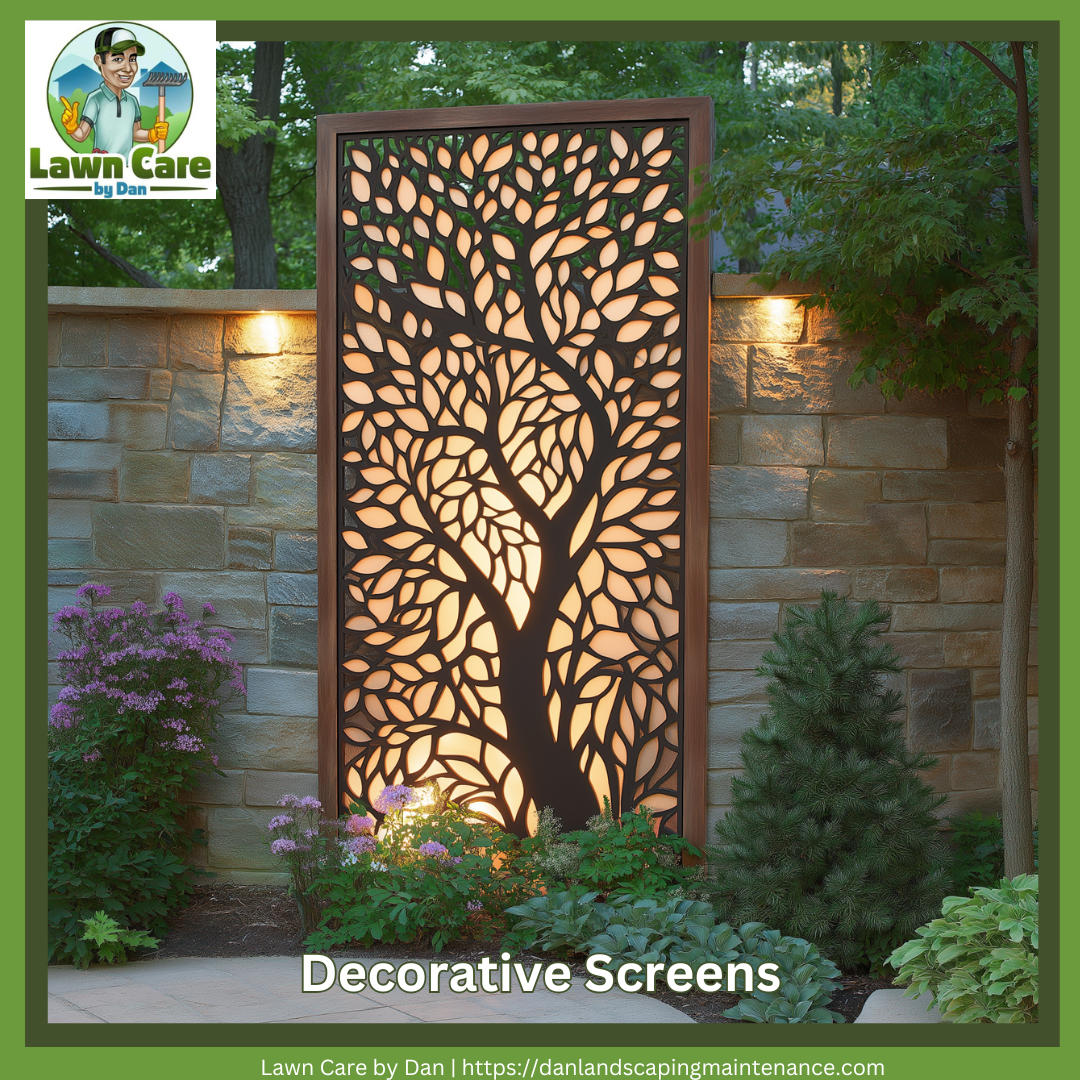
6. Tiered Garden Walls for Layered Beauty
Tiered walls allow you to organize your garden into multiple levels, creating a sense of depth and dimension.
- Plant Diversity: Different plants on each tier create a cascading effect.
- Water Features: Incorporate a small waterfall or fountain for a soothing soundscape.
- Lighting: Place uplights at each level to highlight the structure at night.
For example, imagine a tiered garden wall with ornamental grasses on the top level, roses in the middle, and ground covers like creeping phlox below.
7. Fire Feature Walls for Ambiance
Fire feature walls bring warmth and luxury to your outdoor space. They’re a stunning focal point that also serves as a practical heating source on chilly nights.
- Outdoor Fireplaces: Build a wall with an integrated fireplace for an inviting gathering spot.
- Fire Pit Walls: Combine a fire pit with seating for a cohesive design.
- Material Choices: Use heat-resistant stone or brick for safety and durability.
Picture this: a stone firewall with a long, linear flame, surrounded by cozy seating and twinkling string lights overhead. It’s the ultimate in outdoor comfort.
Choosing the Right Materials for Garden Walls
The choice of materials can make or break your garden wall’s design, functionality, and longevity. Each material offers unique benefits and challenges, from natural stone to modern composites. Let’s explore the most popular options and how to select the best one for your landscaping project.
1. Stone: Timeless Elegance and Durability
Stone is a classic choice for garden walls. It offers natural beauty and long-lasting strength. It blends seamlessly into most outdoor designs and provides excellent structural support.
Advantages:
- Highly durable and weather-resistant.
- Available in various types, such as granite, limestone, and sandstone.
- Aesthetically pleasing with a rustic, natural charm.
Drawbacks:
- It can be expensive depending on the type of stone.
- Requires skilled labor for installation.
Best Uses:
- Retaining walls for sloped gardens.
- Rustic or cottage-style landscapes.
2. Brick: Classic and Versatile
Brick walls offer a timeless, structured look. They’re versatile and can be used in traditional and modern garden designs.
Advantages:
- Strong and long-lasting with proper maintenance.
- Easily customizable in patterns, shapes, and colors.
- Works well with almost any garden aesthetic.
Drawbacks:
- Prone to wear and weathering over time.
- Requires mortar, which may need periodic repointing.
Best Uses:
- Formal garden walls or boundary markers.
- Raised beds or seating walls.
3. Concrete: Modern and Durable
Concrete is a contemporary material that offers endless design possibilities. It’s known for its strength and adaptability, making it a popular choice for minimalist landscapes.
Advantages:
- Extremely durable and low maintenance.
- It can be molded into various shapes and textures.
- Compatible with modern or industrial-style gardens.
Drawbacks:
- Lacks the organic warmth of natural materials.
- Requires precise installation for a clean finish.
Best Uses:
- Modern retaining walls with sleek designs.
- Walls that double as outdoor seating or planters.
4. Wood: Warmth and Natural Appeal
Wooden garden walls bring a cozy, organic feel to your outdoor space. They’re a great choice for gardens with a natural or rustic vibe.
Advantages:
- Affordable and widely available.
- Easy to customize and install.
- Offers a warm, natural aesthetic.
Drawbacks:
- Requires regular maintenance to prevent rot and warping.
- Less durable than stone or brick.
Best Uses:
- Small, decorative garden walls.
- Fencing or raised planter boxes.
5. Gabion: Unique and Industrial
Gabion walls are wire cages filled with stones, rocks, or other materials. They offer a rugged, industrial look and are surprisingly versatile.
Advantages:
- Highly durable and low maintenance.
- Environmentally friendly when using recycled materials.
- Permeable, reducing water pressure on the wall.
Drawbacks:
- It can look overly industrial without proper styling.
- Requires careful filling for a balanced, stable structure.
Best Uses:
- Retaining walls in modern or natural landscapes.
- Accents in eco-friendly gardens.
6. Composites and Other Modern Materials
Composite materials, such as concrete blocks faced with veneer, are growing in popularity. They mimic the look of stone or wood while offering enhanced durability.
Advantages:
- Lightweight and easy to install.
- Resistant to weather, pests, and decay.
- Available in a variety of finishes and styles.
Drawbacks:
- It may lack the authenticity of natural materials.
- It can be more expensive upfront.
Best Uses:
- Contemporary gardens with clean, polished designs.
- Projects requiring cost-effective alternatives to natural materials.
How to Choose the Right Material
To choose the best material for your garden wall, consider the following factors:
- Budget: Stone and composite materials are premium options, while wood and concrete are budget-friendly.
- Style: Match the material to your garden’s overall aesthetic—stone for rustic, brick for traditional, or concrete for modern.
- Functionality: Retaining walls need durable materials like stone or concrete, while decorative walls can use wood or brick.
- Maintenance: Choose low-maintenance options like stone or composites if upkeep concerns you.
- Climate: Materials like wood may not fare well in wet or humid climates.
Did you know gabion walls date back to ancient Egypt, where woven reeds filled with stones were used to control riverbanks? This eco-friendly design still inspires modern landscaping!
How Lawn Care by Dan Can Bring Your Vision to Life
At Lawn Care by Dan, we specialize in designing and building custom garden walls that reflect your unique style. Whether you want a simple retaining wall or a complex living wall, we’ll make it happen with precision and care.
Our team understands the importance of blending aesthetics with functionality, ensuring your landscaping looks good and lasts for years.
FAQs About Landscaping and Garden Walls
Q: How long do garden walls last?
A: With proper materials and maintenance, they can last decades. Stone and brick walls are particularly durable.
Q: Are garden walls expensive to install?
A: Costs vary based on size, material, and complexity. Lawn Care by Dan offers competitive pricing and custom solutions.
Q: Can garden walls be eco-friendly?
A: Absolutely! Use sustainable materials or build a living wall to support biodiversity.
Q: Can I build a garden wall myself, or should I hire a professional?
It depends on the complexity of the project. Simple, small garden walls made of wood or prefabricated blocks can often be DIY-friendly. However, retaining walls or intricate designs require structural knowledge and expertise. Hiring professionals like Lawn Care by Dan ensures safety, durability, and a polished finish.
Q: What permits are needed to build a garden wall?
In most areas, walls over a certain height (typically 3-4 feet) require permits. Retaining walls may also need inspection due to their impact on soil and drainage. Check your local building codes or consult with Lawn Care by Dan, who can guide you through the process.
Q: Can garden walls increase property value?
Yes! Well-designed garden walls add functionality and aesthetic appeal, which can boost your home’s curb appeal and value. Retaining walls that manage slopes or prevent erosion are particularly beneficial, as they demonstrate proper landscaping maintenance to potential buyers.

